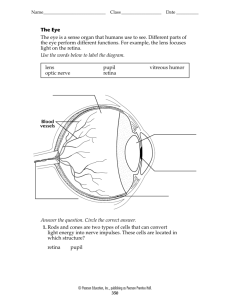In a world consumed by visual splendor, the ear often plays second fiddle to the eye. Yet, this unassuming organ holds a symphony within, a vital tapestry woven from frequencies and rhythms that shape our perception and connect us to the world around us.

Image: hearingreview.com
The ear is a marvel of evolution, an instrument of perception that has danced alongside our ancestors through the epochs, whispering secrets of survival and unlocking doors to boundless realms of experience. But what exactly is the ear, and how does it transcend the limitations of sight?
Unveiling the Ear: A Masterpiece of Perception
The ear, an intricate web of structures both external and internal, is the gateway to the vibrant symphony of sound. The outer ear, elegantly sculpted with ridges and curves, gathers sound waves and funnels them into the depths of the ear canal. This sound then resonates upon the eardrum, a delicate membrane that faithfully vibrates, carrying the imprint of the sound.
The reverberations of the eardrum traverse the middle ear, a chamber housing three tiny bones named the malleus, incus, and stapes. Together, these ossicles form a lever system, amplifying and transmitting the sound vibrations to the inner ear.
Within the inner ear, coiled in a labyrinthine dance, resides the cochlea. This fluid-filled structure contains microscopic hair cells that sway responsively to the incoming vibrations, painting an intricate sonic landscape. These hair cells translate the vibrations into electrical impulses, carried along the auditory nerve and into the brain, where they are perceived as sound.
Sound and Survival: A Symphony of Senses
The ear is not merely a sensory organ; it is a shield of survival, a delicate sentinel that weaves a tapestry of sound to protect us from harm and guide us amidst danger. Sudden noises jolt us awake, warning of impending peril, while the ebb and flow of traffic orchestrate a harmony that shapes our decisions as we navigate the urban jungle.
The symphony conducted by our ears orchestrates the delicate ballet of balance. The vestibular system, nestled within the inner ear, detects changes in our position and enables us to maintain a steady and graceful gait, defying the laws of gravity with every step.
Sound and Emotion: A Vibrant Tapestry of Experience
The ear dances to the rhythm of our hearts and mirrors the emotions that paint our inner landscapes. The sound of a loved one’s laughter ripples through our souls, painting a vibrant hue upon our canvas of existence, while the tender murmur of a gentle breeze soothes our harrowed spirits.
Music is the language of the ear, a universal balm that transcends spoken words and evokes a myriad of emotions. From the subtle sway of classical melodies to the raw pulse of rock and roll, each note reverberates through the labyrinth of our being, creating a symphony of memory, nostalgia, and longing.

Image: studylib.net
The Ear Is What To The Eye
The Ear’s Call to Action: Embrace the Symphony
The ear, so often overlooked in favor of the captivating gaze, deserves our fervent respect and undivided attention. By embracing the symphony of sound, we unlock a world of discovery, beauty, and connection.
Honing our auditory awareness elevates our consciousness, making us more attentive to the nuances of life and the subtle melodies woven into the fabric of existence. Take pause today, step into the silence, and listen—truly listen—to the vibrant symphony that surrounds you.
In the hushed whispers of the wind and the harmonious clamor of urban life, in the breathtaking resonance of music and the soft cadence of laughter, the ear unravels a tapestry of wonder and possibility. Embrace the symphony, for in the ethereal realm of sound lies the key to a life truly lived.